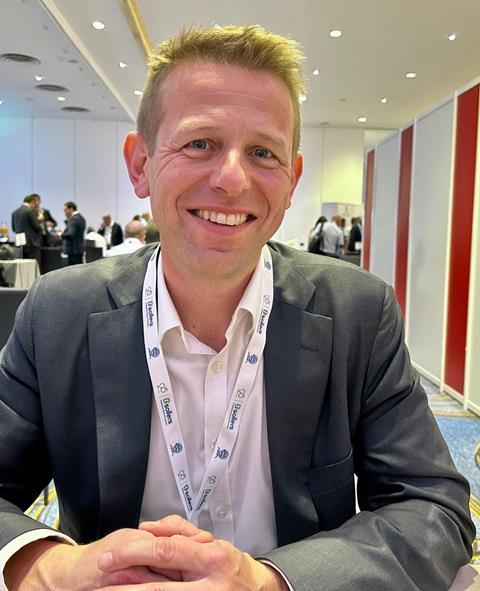The marketplace’s London Bridge 2 model ‘complements’ reinsurance’s alternative capital tools, such as catastrophe bonds, say market leaders

Lloyd’s of London presents “a highly compelling platform for third party capital to source risk and for originators of risk to source third party capital”, according to Andrew Newman, president at Gallagher Re.
Addressing trade press ahead of the RVS 2025 conference in Monte Carlo this week (September 2025), Newman explained that Gallagher Re is “very active in the syndicate formation space” – in part thanks to Lloyd’s of London’s “truly unique” London Bridge 2 (LB2) framework, which works “to connect risk to capital”.
Newman added: “We expect more activity in Lloyd’s, including London Bridge 2.”
LB2, a protected cell company, launched in 2022 to improve accessibility for new investors into Lloyd’s.
According to management consultancy Oxbow Partners, the initiative “provides greater flexibility and risk transfer options than its predecessor, London Bridge 1, allowing members to raise corporate member capital to support syndicate underwriting plans or to include collateralised reinsurance in syndicates’ outwards reinsurance programmes”.
In Lloyd’s of London’s 2025 half-year financial results, published on 4 September 2025 and covering the six-months to June 2025, chief executive Patrick Tiernan confirmed that “investor appetite for innovative reinsurance structures remains strong, with £2.2bn of new capital coming through London Bridge 2 [and] supporting new sidecar style syndicates and reinsurance startups at scale, such as Oak Re”.
A different alternative capital route
Talk across 2025’s RVS conference has homed in on record levels of alternative capital being deployed in the reinsurance market.
For example, Moody’s Ratings stated ahead of the Monte Carlo event that usage of alternative capital tools had grown 24% since the end of 2022, providing around $115bn (£85bn) of capacity to reinsurers – this equated to “about 16% of the estimated $720bn (£533bn) of total global reinsurance capital”.
Alternative capital refers to models whereby reinsurers transfer risk by tapping into capacity supplied by the financial markets – for example, hedge funds, mutual funds, sovereign wealth funds, pensions and institutional investors.
Commonly used alternative capital tools include catastrophe bonds and sidecars.
However, Andy Moore, Lloyd’s and London market leader at professional services firm PWC, noted that investors seeking to use Lloyd’s syndicates as an alternative capital model very much “complements” cat bonds and other insurance-linked security (ILS) arrangements.
He explained: “It’s providing investors with another route to access that kind of insurance business.
“We’ve seen such a demand from all equity markets to get access to diversified insurance risk. Sometimes that’s just simple for people to do predominantly through Bermuda, [but] LB2 now creates a UK-based structure for people to do the same.”
The attraction of Lloyd’s

For Moore (pictured), there are several key reasons why Lloyd’s presents an enticing investment opportunity.
Firstly, there is the “quality of the business” and the fact Lloyd’s of London’s “very attractive set of [financial] results” can work to “entice investors”.
Another attraction of Lloyd’s for investors is its global footprint, which is “very hard to replicate”, as well as its London-centric ecosystem, which includes claims functions and professional services firms. This provides an “intellectual quality, which makes [the marketplace] really attractive”.
In addition, Moore believes “Lloyd’s has changed its approach as to how it assesses people”. He continued: “The principles-based oversight framework that [it has] built in has allowed [the market] an ability to really look at businesses on a holistic basis”.
Moore further views LB2 as “a competitor” to ILS arrangements.
He noted that the legislation behind LB2 came into force in 2017 and although the initiative took a while to get off the ground, it now “allows people to invest in a tax efficient structure”.
He added: “[It is] all set out in legislation to be tax efficient, but it’s allowing people to compete.”
To download the full Monte Carlo RVS 2025 annual issue of GR, click here.










No comments yet